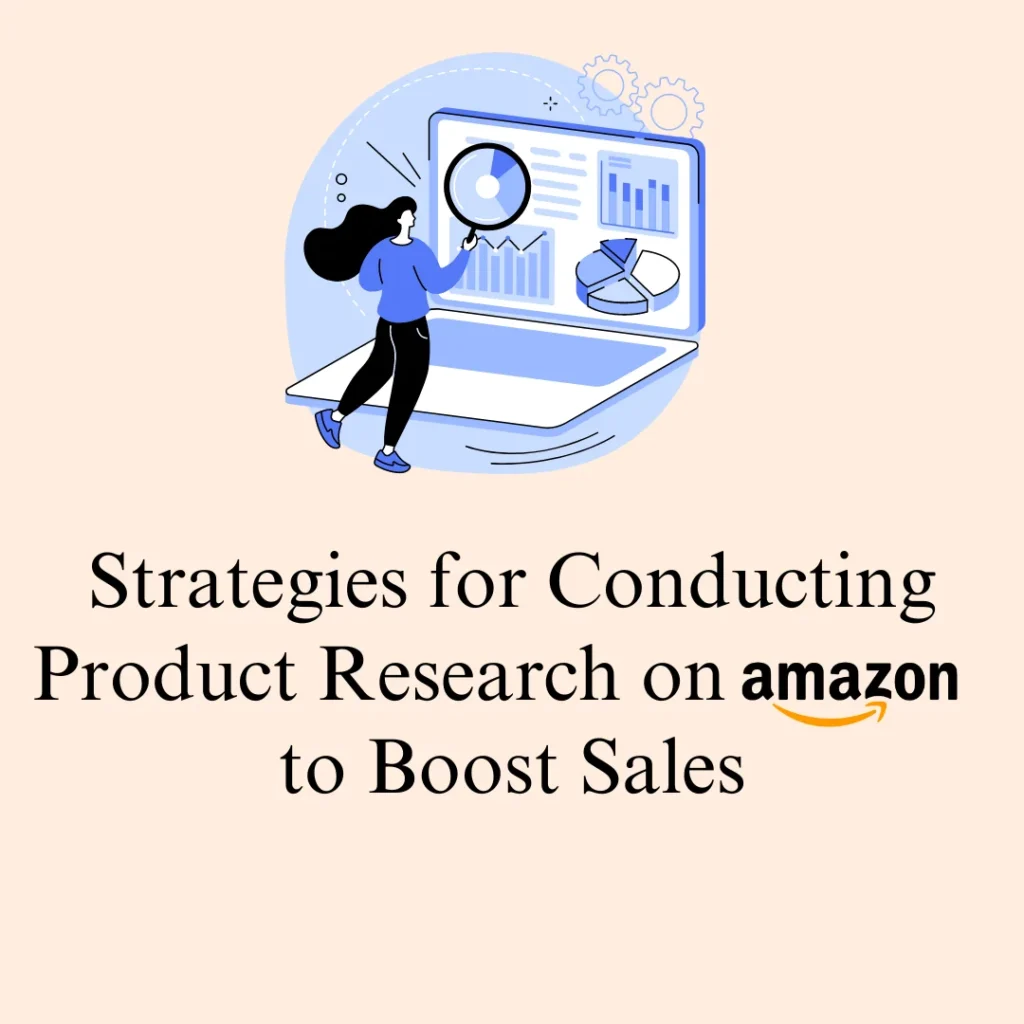How To Do Product Research for Amazon
Many people know that Amazon is the leading player of the e-commerce business. It opened great opportunities for doing business and reaching more customers in a very efficient way. However, doing business on Amazon, especially in as competitive market as India, one cannot just put a product for sale or list it up, instead, a customer must do deep and thorough product research. This guide will take you along the various important steps to help you decide on the products that are likely to be best selling on Amazon India and therefore will help to grow your business in this competitive marketplace.
Step 1: Understand Your Niche
Successful product research on Amazon will begin with the identification of the niche that matches one’s knowledge, interest, and demand in the market. This is especially true for the Indian market, where the tastes of consumers can be very specific to the culture. Focus on some of your enthusiasts, areas of skills and subjects in which you have good knowledge. Ask yourself:
Which product range do I have knowledge on or do I have interest on?
Which industry do I work in or what are my hobbies?
It would also help you understand the pain points of your target customers, reason your way through product development, and gain a competitive edge over your rivals. For example if your background is in sports, wellness products could be a good niche to look for.
It is equally important in the Indian context to be aware of the cultural patterns, geographical preferences, and other consumer behaviors. Some niches might include high demand in certain areas or certain target audiences. Use Google Trends to gauge search interest in India and spot underserved niches that are proven to grow steadily. Look at corresponding market tendencies, how big is the potential audience, and market saturation in the specific niche you select. This is an important step as it will assist you in the product research you are planning to carry out and allow you to narrow down your focus to the best rewarding market opportunities
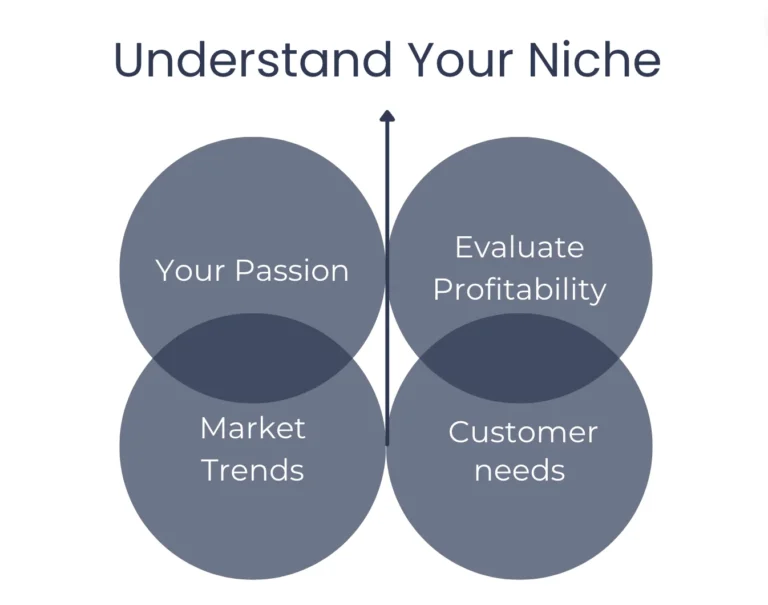
Step 2: Understand Customer Needs
The very first thing that you should do is to know the requirements and in this case, it concerns the target audience. This is true for India where several changes in consumer behavior are seen due to region, class, and culture. To initiate such research, just take a look at the best-sellers sections on amazon.in for the targeted niche. These lists give you a breakdown of what the Indian masses are likely to purchase at any particular time.
Also, look at the customer ratings and reviews for similar products. Most of the times reviews offer a constant narrative regarding pain points, favourite and unfulfilled expectations. For instance, if numerous customers claim that a certain kitchen gadget doesn’t last long, then possibly one has a chance to introduce a more durable option.
Beyond Amazon, consider looking for Indian user review sites, Facebook, Instagram, and other sites which demonstrate interest in that topic. Try to find the audience of your target products by conducting surveys, polls, or by contacting them in person to learn their attitudes and viewpoints.
Knowing these demands makes it easier for you to conduct product development that corresponds with the actual needs in the market to help in finding products that sell but also provide adequate solutions to the Indian buyers.
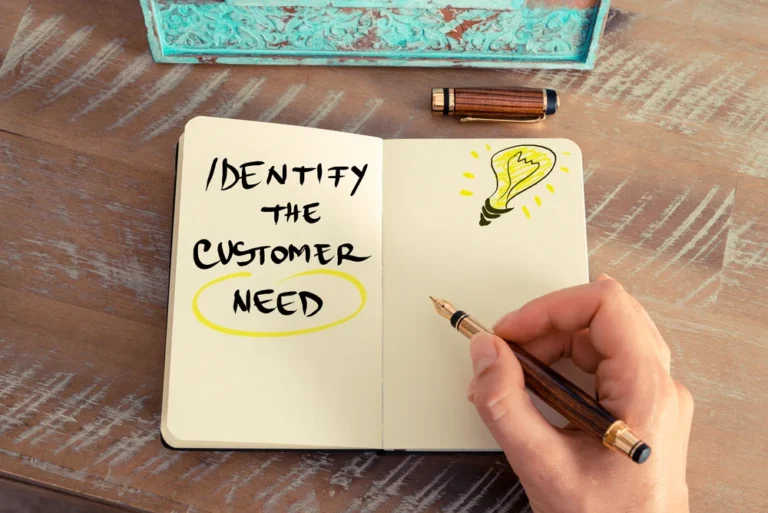
Step 3: Use Product Research Tools
When it comes to sophisticated data an information acquiring about the possible products, it is advisable to employ certain product research tools that are geared for Amazon sellers. AMZScout, Helium 10, and Jungle Scout manage to provide sales data of a certain timeline, shifts in prices trends over time, keyword search volumes and other historical statistics. These tools are very helpful to find popular search terms used by Indian customers.
For the Indian market, it’s particularly important to use these tools to analyze local competition and trends. For instance, Helium 10 Market Tracker would assist in determining which of your items has the optimum demand in particular parts of India. On the contrary, AMZScout’s Keyword Explorer will allow you to find the right phrases that Indian citizens often use, which will, in turn, make it easier for you to optimize your listing of the product.
These tools allow you to filter products by demand, competition level, and profitability. Products that would be assessed to have a high demand and yet the competition is very low. In addition, determine where the current products are lacking and where other products can be introduced. Look at the seller ratings, customer reviews, and the sales rank of the products to determine the market saturation. For example, a product category that has many sellers but a lot of low rating products may be a good category to launch a superior product.
Step 4: Analyze the Competition
A detailed competitive examination is equally important. This step is critical in the Indian market since the competition in the market can be cut-throat at times. Cutthroat competition New sellers always seek ways to not only enter their specific niche but to come out on top. Define a direct competition in your chosen niche. Study the Competition in terms of diversified product offerings, price-points, reviews, and brand equity.
Keyword research and sales tracking tools available in Jungle Scout’s Product Tracker can also help track sales performance of competitors. Consumers can further assess the product propositions of competing products on Amazon and its substitutes or alternate channels. Look at the images of the products, their descriptions, and words.
Studying the competition will provide clues about how to position your products. For example, suppose that competing companies are selling products with limited colors or sizes. In that case, you may want to cut these dimensions broader. Or else leave the product in the same direction but work on product enhancing or service quality instead so that the company has some competitive advantage in the market.
Identify the niches that have a fair balance between demand and competition. Ideally, such buyers would look for new opportunities and not compete in overly saturated markets with prominent and successful brands unless they can propose quite other or better products. On the other hand, there might be goldmine opportunities in niches that are not crowded but have great demand. For instance, Indian organic skincare market is valued at xxx billion and with growth every year but they can still find scope for new players who can provide different kind of formulation or sustainable packaging.
Step 5: Assess Profitability
Profitability is an important consideration of product research, and can make or break your business. While selling on Amazon India, you must exercise additional vigilance on several aspects, such as Indian market specific costs, competition and consumers’ price sensitivity which may determine the profits to be earned.
A) Compute Total Expenses
When you want to gauge the potential profits of the concerning venture, the first step you should take cover is estimating all (and any) costs that are likely to be incurred in the process. These costs include:
Product sourcing/manufacturing costs: In case you are purchasing products from local suppliers or manufacturers, check prices from several suppliers in order to get them cheap. In case you are using outsourced products, bear in mind that all your quotations should include customs duties and shipping except for the GST. Also, be retrospective to any area specific taxes or levies that may be applicable, more so if you intend to market goods in other states in Indian territory.
Cost to Sell on Amazon: Further, there are other costs pertained to selling on Amazon India that you need to consider such as the seller fees on certain product categories. This includes referral fees (a certain percentage of the product selling price), closing fees and GST on the services offered. The average range in this sort of fee attracts between 5% to 15% on selling price basis on most Amazon tariffs. This should be taken into consideration since they may reduce your profit levels greatly.
Shipping and shipping materials: whether through the FBA or taking care of the fulfillment process by yourself, shipping is one of the most important aspects. Logistics in India is related to a certain extent to the geography of the area, as some places are more or less remote from the main urban centers that have the highest concentration of people and businesses. Packaging is yet another hurdle; going green in packaging may open new market opportunities to you but increase operating costs. Do not forget, however, to focus on cost efficiency without culling the standards.
Return and replacement costs: Within the Indian context, the higher return rates are likely to affect the profitability. Increasingly, certain product categories like fashion tend to have higher returns especially because of the wrong size or colour delivery. These components should be included in the plans since they can cut down your profits if they are not properly controlled.
B) Set a Competitive Selling Price
A more competitive selling price setting comes into play once there is a knowledge of all the costs involved. Indian consumers are mostly price-sensitive meaning that the pricing of your product has to find the right balance between low pricing and profitability.
For this purpose, survey analogous items available in India Amazon that can be found within the same price range as your product. Change your pricing according to what your competitors are charging. In case of competition, an aggressive pricing strategy at the time of entry may result in positive market response, but remember profitability should not be compromised.
Suppose, for instance, that you are a kitchen appliance sells; Let say the competitors are pricing the olive oil machines at ₹1,500 as one would expect. After understanding sourcing, FBA and other fees you circled back to the pricing , and found it might be acceptable to price it at ₹1,400 only, which would provide a thin profit margin. Try to answer the question that away what is the price one can afford to offer and what is to be upgraded from normal packing to a premium one.
The Profit Margins Should be Monitored
Generally, a reasonable profit margin must be within the region of 25-30%, when all expenses including Amazon charges have been removed. This margin can accommodate unexpected expenses such as surging ad costs or increased cost of goods in selling.
In India, price wars on e-commerce platforms can be common and scores of potential sellers may want to slash prices. In such a case to remain in business profitability will require that you keep wide margins to allow for price cuts. Keep an eye on key indicators like gross margin (selling price minus cost of goods sold) and net margin (profit after all expenses). Tools such as Helium 10’S Profitability Calculator and reports from Amazon’s Seller Central are helpful in monitoring these margins.
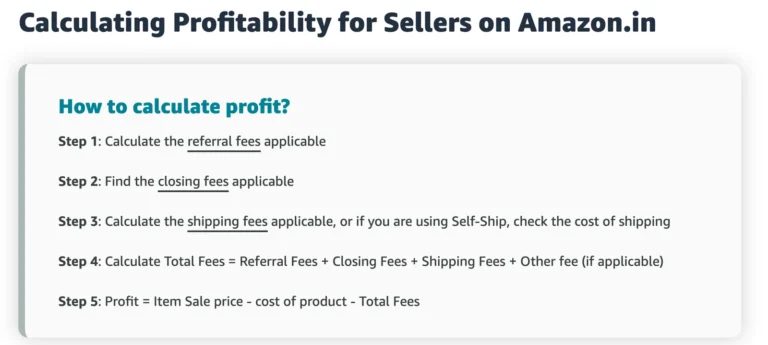
Step 6: Do not miss out being aware of seasonality and trends
Seasonality and trends are other key factors that can either make or break the success of the product you wish to sell on Amazon. In India for instance where consumers buy goods based on seasons culture and festivals must be considered in the product researches.
First, find out if the demand for the product is consistent, or it is seasonal. For instance, winter wear stuff like woolies and heaters record huge sales during the winter season. Likewise, air conditioners and coolers are in high demand more during hot months. Knowing these trends helps you manage your marketing and inventory levels perfectly.
In addition to the seasonality aspect, think about new tendencies which appear in your niche in the nearest future. As an example, such trends can be dictated by the changes in the technology as well as by the changes in the civilization and also by the international situations. In these situations, change is inevitable so it would be useful to keep track of related news, industry relationship specialists in social media, and receive email newsletters in this field.
For example, increasing importance of sustainability in today’s world has led to increased acceptance of green products in India. As such, if you notice such a shift at an early stage, you may as well advance your product to meet the expected increase in demand. The same applies for the increase of health conscious clients, fitness, and wellness related products have rapidly gained popularity. By recognizing such trends, you can make wise decisions regarding the way your product should be developed.

Step 7: Source Reliable Suppliers
It is necessary to establish all the ways for procuring goods of highest quality. This is particularly critical in a country like India where the options for sourcing are abundant. It is advisable to begin with pre-qualification of the suppliers, especially looking for manufacturers or distributors with good standing and ability.
Also, Alibaba, IndiaMART, or TradeIndia are good sources for the prospective suppliers. In reviewing suppliers, take into consideration their production capacity, lead times, current manufacturing system, and quality control. The appropriate suppliers must be those who can keep up with the requirements for the produced items’ standards.
Ask the suppliers to provide some samples for you to check the quality of their products. This step comes very critical when you are sourcing for several items and can help to identify and select the most favorable product. When it comes to suppliers, you need to be able to communicate with them and for that reason, assess their ability and willingness to address the concerns.
Developing your relationship with your suppliers will allow you to be granted better concessions and be more efficient in your operations. For example, you might be able to negotiate favorable procurement terms or even have an exclusive right to certain products which may give you an edge over the competition. Working with dependable suppliers will also allow you to deliver what the Indian market needs in terms of quality as well as speed.
Step 8: Calculate FBA Cost
If using Fulfillment by Amazon (FBA), the seller needs to factor in FBA expenses such as storage, pick and pack, and shipping fees. In India, FBA is also quite popular due to Amazon’s extensive delivery network, although the fees depend on the dimensions and weight of the product. Make use of the Amazon FBA Revenue Calculator for proper estimation of these expenses and think of the product category if it is worth using FBA. On the other hand, bulky goods like furniture can attract high storage and shipping costs while small products like mobile phone accessories may not be able to attract high FBA costs.
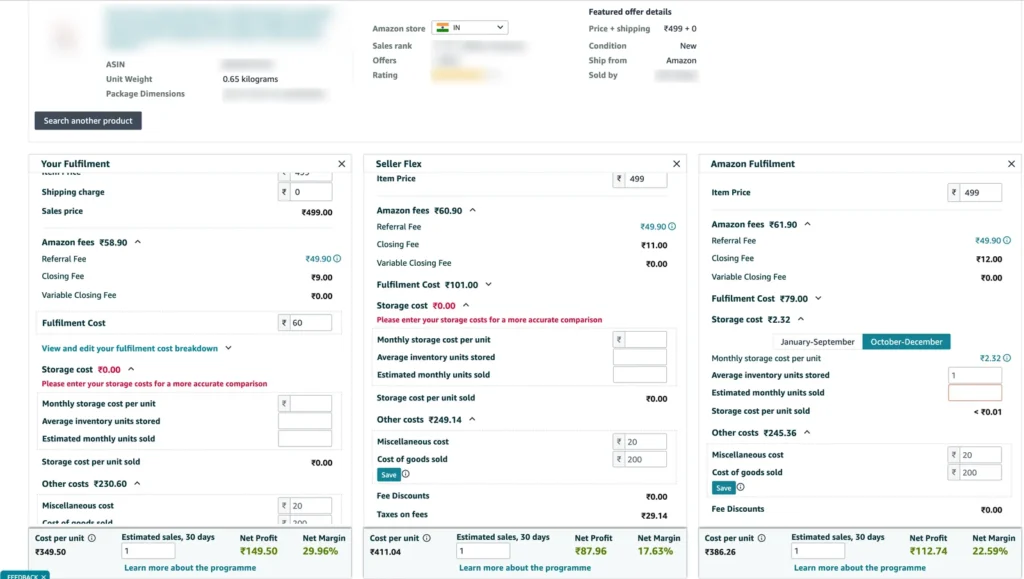
Step 9: Test the Market with a Minimum Viable Product (MVP)
Before committing a lot of resources to purchase of large quantities, it is safe to get out into the market with a Minimal Viable Product (MVP). An MVP allows you to validate your product concept with minimal investment, gather feedback from early adopters, and make necessary improvements before scaling up.
It can be beneficial to sell a smaller quantity of the product or sell a single unit of the product through Amazon. Focus on the sales, customer reviews and other feedback to find out where interest lies or what can be done better. For instance, if it is a common observation that this product is effective but the product comes in inadequate packaging all the time, you will know that this is a limitation that needs to be sorted prior to the ramp up stage.
Using an MVP allows you to find your customers’ preferences while reducing the risks. It also allows one to enhance their marketing, packaging, and product strategy through real data. When you have tested your product idea and done all the necessary tweaking, you are ready to place bulk orders and grow your company.
Step 10: Optimize Product Listings
The importance of creating effective and optimized product listings cannot be over-emphasized especially on amazon where competition on the products is great and conversion is being sought. Well-optimized listings in India, where competition is tough and consumers are price competitive, are quite essential and will boost sales on Amazon.
Begin with a precise product title, making sure it contains keywords relating to the product. Use tools like Helium 10’s Keyword Research tool to gather the most heard keyword phrases and word used by Indian consumers in your business field. Use these keywords in the title, description, and bullet points to enhance search visibility.
Next, concentrate on composing an impressive product description which explains the merits and specificities of your product. Make sure to mention why your product is superior to other competing products and address any major issues that were established in your customer research. In other words, if you are marketing an environmentally friendly kitchen product, such as a bamboo spatula, highlight its sustainability and health benefits.
Use Eye-Catching and High Quality Images and Videos:
A customer cannot touch and feel the product while shopping online, and therefore, visuals become very important in helping in the online purchase decision. Use multiple high quality images of your product in different settings and angles. Videos are even more effective; they can show how the product works and all its features or even how it is used. In fact, they say, ‘an image is worth more than a thousand words’; if your visuals speak more, believe customers will trust your product. Including images that depict how the product is used renders prospective buyers more excited about buying it, thus increasing purchase chances.
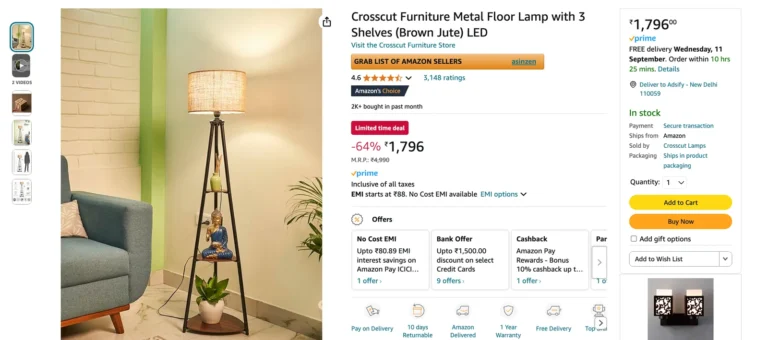
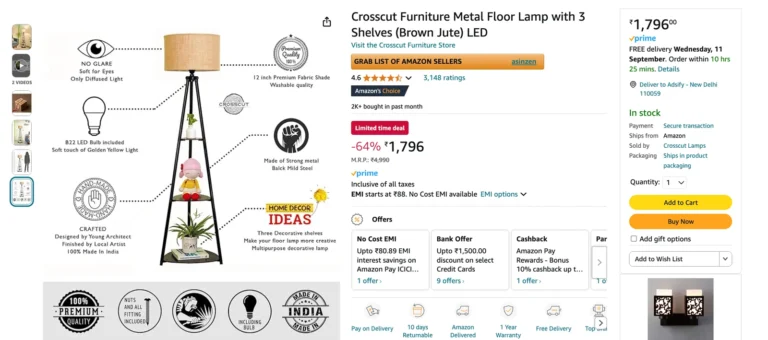
Conclusion:
Conducting thorough product research is the cornerstone of success on Amazon, particularly in a diverse and competitive market like India. By following these step-by-step procedures, you can identify profitable product opportunities, differentiate your offerings, and maximize your chances of success. Remember, the key to thriving on Amazon is adaptability—continuously refine your research strategies as market trends and customer preferences evolve.
As you embark on your product research journey, keep the needs of your customers at the forefront and strive to offer unique value. With the right approach, you can build a sustainable and profitable Amazon business in India. Best of luck on your journey!
Additional Reading
For more insights into optimizing your Amazon business, check out:

